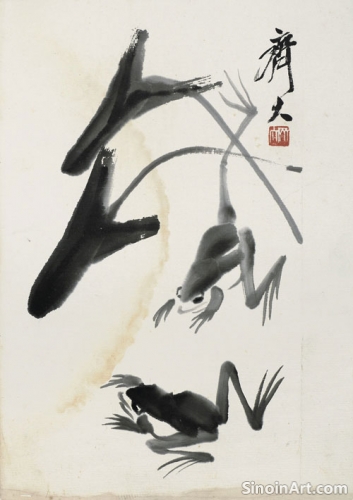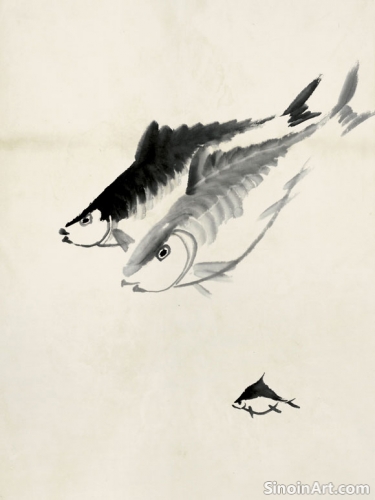Xieyi Painting and the Concept of "Yuan Qi"
|
"Yuan Qi" (元氣), often translated as "original vital energy" or "primordial force," is a core concept in Chinese philosophy and art, representing the fundamental energy that underlies all of creation. It’s a concept that is closely linked to the concept of Qi. It’s the energy that underlies all aspects of existence and it is something the artist seeks to tap into.  The pursuit of yuan qi in Xieyi involves not just capturing the outward appearance of things but also conveying their inner essence, their inherent vitality, and the fundamental creative power that animates the natural world. The artist strives to align themselves with this creative energy. It’s about conveying the true nature of a subject, beyond its mere surface appearance.  The artist’s own inner yuan qi is crucial to achieving this, requiring that they cultivate a state of balance, mindfulness, and a deep connection with nature. The goal is to clear the mind, and to become a channel for this creative energy. The practice is a way of aligning one’s own internal energy with the underlying forces of the universe.  The brushstrokes themselves should be imbued with yuan qi, reflecting the artist's inner vitality, intent, and creative energy, with each line possessing a feeling of power and purpose. The brushstrokes should be more than just a visual mark; they should be a clear and direct manifestation of inner creative power. The energy of the brushstrokes reflects the artist’s intention. The search for yuan qi reflects the belief that art is more than just a skill; it is a spiritual practice, a means of connecting with the fundamental forces of creation and expressing them through the language of ink and brush. The act of art creation becomes an exploration of the artist’s own internal relationship to the source of all life. It is an act of creative and spiritual communion. |
Tag : primordial force, original energy, vital spirit, Chinese life force
Related information
- The Role of the Brush in Xieyi Painting
- Xieyi vs. Gongbi: Two Paths of Chinese Painting
- Xieyi Painting and the Use of "Boneless Technique" ( Mògǔ)
- The Cultural Significance of Xieyi: Beyond Artistic Form
- The Use of "Multiple Brushstrokes" in Xieyi
The Chinese brush is essential to Xieyi painting, serving as an extension of the artist's hand and mind. Mastering brush types, grip, pressure, and stroke is crucial for creating the diverse range of expressive marks and textures characteristic of the art form.
This article contrasts Xieyi painting with Gongbi painting, highlighting the differences in their techniques, brushwork, use of color, and overall artistic philosophies within the Chinese painting traditions.
The "Boneless Technique" (mògǔ) in Xieyi relies on the absence of outlines, instead using washes of ink and color to create form and texture, resulting in fluid, organic works that require skill in blending and layering, as well as spatial awareness.
This article explores the cultural significance of Xieyi painting, highlighting its connection to Daoist philosophy, Chinese values, artistic heritage, and its role in preserving and expressing Chinese cultural identity.
"Multiple Brushstrokes" (cūn fǎ) are essential in Xieyi landscape painting, offering a variety of textured strokes that create a sense of depth, form, and visual complexity, requiring skill and strategic layering to depict mountains, rocks, and trees, adding dynamism and guiding the viewer’s eye through the composition.